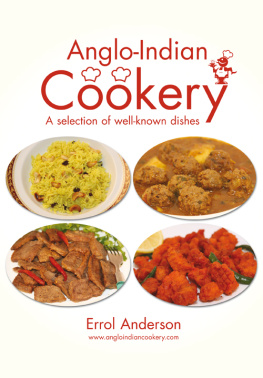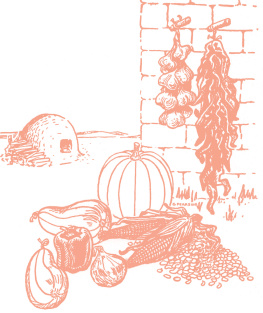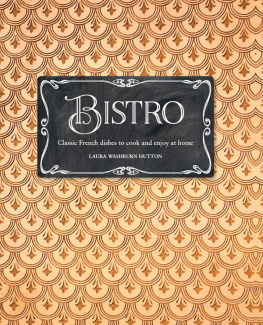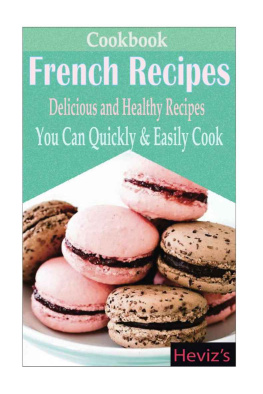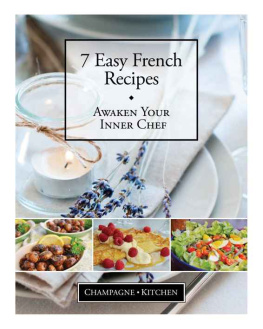THREE HUNDRED
AND SIXTY-SIX
MENUS AND
TWELVE HUNDRED
RECIPES
Baron Brisse is one of the great names and authorities of European cuisine. His book is essential reading for anyone interested in food, cooking, and its history. The carefully selected recipes come from many schools of cookery and dishes are included to suit every occasion. Menus are presented in French and English, allowing cooks to appreciate the importance of traditional English techniques and recipes as well as the profound influence of French cookery.
THE KEGAN PAUL LIBRARY OF
CULINARY ARTS
All About Ices, Jellies and Creams Henry G. Harris and S. P. Borella
Alexander Dumas Dictionary of Cuisine Alexander Dumas
Dictionary of Cooking
Something New in Sandwiches M. Redington White
A Guide to the Greedy by A Greedy Woman Elizabeth Robins Pennell
A Kings Confectioner in the Orient Friedrich Unger
The Gentle Art of Cookery Hilda Leyel and Olga Hartley
Skuses Complete Confectioner E. Skuse
Three Hundred and Sixty-Six Menus and Twelve Hundred Recipes Baron Brisse
THREE HUNDRED
AND SIXTY-SIX
MENUS AND
TWELVE HUNDRED
RECIPES
__________
Baron Brisse
First published in 2004 by
Kegan Paul Limited
Published 2016 by Routledge
2 Park Square, Milton Park, Abingdon, Oxon OX14 4RN
711 Third Avenue, New York, NY 10017, USA
Routledge is an imprint of the Taylor and Francis Group, an informa business
Distributed by:
Columbia University Press
61 West 62nd Street, New York, NY 10023
Tel: (212) 459 0600 Fax: (212) 459 3678
Taylor & Francis, 2004
All Rights reserved. No part of this book may be reprinted or reproduced or utilised in any form or by any electric, mechanical or other means, now known or hereafter invented, including photocopying or recording, or in any information storage or retrieval system, without permission in writing from the publishers.
ISBN 13: 978-0-710-30824-5 (hbk)
British Library Cataloguing in Publication Data
A catalogue record for this book is available from the British Library.
Library of Congress Cataloging-in-Publication Data
Applied for.
TRANSLATORS NOTE
THE first object I had in translating this work, was to please my cook; but having been asked by many of my friends to give them the recipes (in English) for some of the celebrated Barons excellent dishes, I determined to allow my poor translation to appear in print. May I, under these circumstances, ask the forgiveness of all English cooks, if I venture to give them a few hints how best to carry out the views of one of the greatest of French chefs?
Soups.The reader will at once see that no colouring is ever used in French soups.
Fish.There are many kinds of fish mentioned, which you rarely see named in the fishmongers bills of fare, but they can be procured at any good fishmongers if asked for, such as Garfish, Weaver, or Whiting Pollock. Crayfish in excellent condition can always be procured at Schells, in Wigmore Street.
Beef.Whenever boiled beef is mentioned, it means fresh, not salt meat.
Vegetables.Celery roots and cardoons, both most delicious vegetables, are seldom seen at English dinner-tables, but they have been for sale at Martins, in Covent Garden, for several years past.
Cooking wine.Chablis is the white wine generally used for cooking in France; so in the recipes, I hope it will always be used, unless Madeira or Sherry is specially mentioned.
Bills of fare for fast days.There are so many good dishes for our fast days given in this book, that I hope all Catholic families will try them, and perhaps pass happier Fridays than hitherto.
EDITH MATTHEW CLARK.
PREFACE.
THIS book, which was already one of the most useful and practical of cookery books, has been rendered more complete in this edition by many alterations and modifications.
The bills of fare are written entirely according to our French customs.
Dishes used by both rich and poor are given in their proper seasons.
The recipes have come from many different schools of cookery, and are clearly and concisely explained.
In this edition, as in my previous ones, I have not attempted to give recipes for using up scraps, as this art is only useful when you run short of provisions; it is quite a mistake to imagine that warming up previously cooked meat is economical, as all good transformations must be expensive. The only way to use up scraps of meat is to warm them in any of the simple sauces, recipes for which will be found further on.
Scraps of fowl or game must not come under this category, as all salmis and marinades have to be made from fowls or game which have been previously roasted.
Entres of game or fowl must always be warmed up, in the same sauce, if required to be used on the second day.
In cookery, above all things, Nothing can come of nothing.
THE AUTHOR.
ORDER OF DINNER.
THE art of giving dinners consists in the knowledge of certain rules, consecrated by custom and determined by fashion, as to the choice of dishes and the reason of their selection, according to time and circumstances.
Every country has its different customs which very much depend on the climate and character of its people.
But I will now only speak about the manner of serving dinners in our beautiful country of France, as I feel I need go no further for fashions; all the world acknowledges that it is from us that the most varied culinary resources come, and it is also in France that the cleverest artists have devoted their talents to the preparation of dishes, with which to enrich our bills of fare. In fact, it is to us that all fashions of different nations are brought to be accepted according to their merits, and this exchange of new thoughts and ideas has created what is called fashionable life.
DECORATIONS OF THE DINNER-TABLE.
How to lay the Covers.The Order of Dinner.
Formerly dinner-tables were heavily decorated with massive bronze, silver, and cut-glass ornaments, which prevented the guests from seeing each other across the table, and rendered conversation with your opposite neighbour impossible. At the present time, these ornaments have been superseded by low flower-baskets of either glass or silver. Formerly candelabra only held four or five candles, now they hold as many as fourteen or fifteen, so we require fewer and have more light.
Each guest must have a tumbler and three wine-glasses placed on his right-hand side, arranged according to the order in which the wines are served. First, Madeira; second, Bordeaux; third, Champagne. During dinner extra wines have special glasses handed with them. Finger-glasses with warm water must be handed after crayfish or prawns.
The dessert plates must always have a doiley and a finger-glass placed on them.


